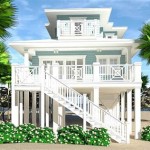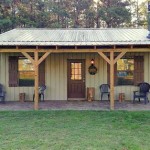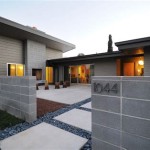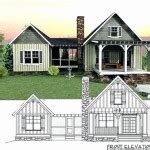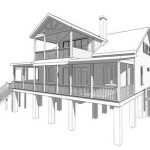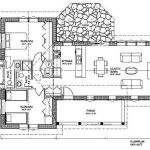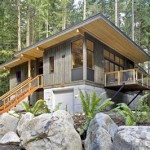House planning design encompasses the process of creating and optimizing the layout of a home, taking into account factors such as functionality, aesthetics, and comfort. It involves the arrangement of rooms, selection of materials, and placement of fixtures to ensure that the living space meets the needs and preferences of its occupants. An example of house planning design is the design of a kitchen, where the placement of appliances, cabinets, and countertops is carefully considered to create an efficient and ergonomic workspace.
Effective house planning design requires a combination of technical expertise and an understanding of the client’s requirements. Architects and designers work closely with homeowners to create designs that meet their specific goals, whether it’s maximizing space utilization, enhancing natural lighting, or incorporating sustainable features.
In this article, we will delve deeper into the various aspects of house planning design, exploring different design concepts, considerations, and trends that can help homeowners create the perfect living spaces for their needs.
House planning design encompasses various crucial aspects that contribute to the functionality, aesthetics, and overall success of a home. Here are 9 important points to consider:
- Space planning
- Layout optimization
- Material selection
- Lighting design
- Energy efficiency
- Storage solutions
- Interior finishes
- Accessibility
- Sustainability
By carefully considering these elements, homeowners can work with architects and designers to create living spaces that meet their specific needs and preferences while enhancing their quality of life.
Space planning
Space planning is the process of organizing and optimizing the use of space within a building, particularly in the context of house planning and design. It involves determining the best layout for rooms, furniture, and other elements to create a functional and aesthetically pleasing living environment.
- Defining room sizes and proportions: Space planning begins with determining the appropriate size and shape for each room based on its intended use and the number of occupants. This involves considering factors such as furniture placement, circulation patterns, and natural lighting.
- Creating functional adjacencies: Space planning also involves arranging rooms and spaces in a way that promotes efficient movement and interaction. For example, placing the kitchen adjacent to the dining room and living room can facilitate meal preparation and socializing.
- Maximizing natural lighting: Effective space planning takes advantage of natural light to create a and inviting atmosphere. This can involve placing windows and skylights strategically to allow for ample daylighting while minimizing glare.
- Incorporating storage solutions: Space planning should also consider the need for adequate storage space throughout the home. This may involve designing built-in closets, shelves, and other storage units to keep belongings organized and out of sight.
By carefully considering these principles of space planning, architects and designers can create homes that are not only visually appealing but also highly functional and comfortable for their occupants.
Layout optimization
Layout optimization is the process of arranging and organizing the elements of a house plan to create a functional, efficient, and visually appealing living space. It involves considering factors such as traffic flow, natural lighting, and the relationship between different rooms and spaces.
- Creating a clear and efficient circulation pattern: The layout should allow for smooth and easy movement throughout the home, avoiding bottlenecks and dead-end spaces. This involves carefully planning the placement of doors, hallways, and stairs to minimize congestion and promote a natural flow of traffic.
- Maximizing natural lighting: Natural light can significantly enhance the ambiance and comfort of a home. Layout optimization should prioritize the placement of windows and skylights to allow for ample daylighting in all areas of the house. This not only reduces the need for artificial lighting but also creates a more inviting and healthy living environment.
- Establishing clear relationships between spaces: The layout should define clear relationships between different rooms and spaces, creating a sense of cohesion and flow. This can be achieved through the use of sight lines, adjacencies, and transitions. For example, creating a visual connection between the living room and dining room can enhance the sense of spaciousness and promote interaction.
- Accommodating specific needs and preferences: The layout should be tailored to the specific needs and preferences of the occupants. This may involve creating dedicated spaces for hobbies, work, or relaxation, as well as considering accessibility requirements for individuals with disabilities.
By carefully considering these principles of layout optimization, architects and designers can create homes that are not only visually appealing but also highly functional and comfortable for their occupants.
Material selection
Material selection plays a critical role in house planning and design, as the choice of materials can significantly impact the aesthetics, functionality, and durability of the home. Here are four key considerations when selecting materials for a house:
- Durability: The materials used in a house should be able to withstand the rigors of daily use and the elements. This includes factors such as resistance to wear and tear, moisture, heat, and pests. For example, choosing durable materials for flooring, countertops, and roofing can ensure that the home will last for many years to come.
- Aesthetics: The materials used in a house should also be visually appealing and complement the overall design concept. This involves considering factors such as color, texture, and finish. For example, using natural materials such as wood and stone can create a warm and inviting atmosphere, while using modern materials such as glass and metal can create a more contemporary look.
- Sustainability: Increasingly, homeowners are opting for sustainable materials that are environmentally friendly and energy-efficient. This may involve using recycled materials, low-VOC (volatile organic compound) paints and finishes, and renewable energy sources such as solar panels. Choosing sustainable materials can help reduce the environmental impact of the home and create a healthier living environment.
- Cost: The cost of materials is another important consideration when planning a house. Different materials have different price points, so it is important to set a budget and prioritize the materials that are most important to you. For example, you may choose to splurge on high-quality materials for the kitchen and bathrooms, while opting for more budget-friendly materials in other areas of the house.
By carefully considering these factors, homeowners can select materials that will create a beautiful, functional, and sustainable home that meets their specific needs and preferences.
Lighting design
Lighting design is an essential aspect of house planning and design, as it can significantly impact the ambiance, functionality, and overall aesthetic appeal of a home. Here are four key considerations when planning the lighting design for a house:
- Natural lighting: Natural light is the most flattering and energy-efficient form of lighting, so it should be maximized whenever possible. This can be achieved through the use of large windows, skylights, and other architectural features that allow for ample daylighting. Natural light can also be used to create specific moods and effects, such as using sheer curtains to diffuse light and create a soft, inviting atmosphere.
- Artificial lighting: Artificial lighting is necessary to supplement natural light and create a comfortable and functional living environment. There are many different types of artificial lighting, each with its own unique purpose and effect. For example, recessed lighting can be used to provide general illumination, while pendant lights can be used to create focused lighting over specific areas, such as a kitchen island or dining table.
- Layering: Layering different types of lighting can create a more visually interesting and functional lighting scheme. This involves combining natural light, artificial light, and accent lighting to achieve the desired effect. For example, using recessed lighting for general illumination, pendant lights over specific areas, and wall sconces for accent lighting can create a layered lighting scheme that is both functional and visually appealing.
- Control: The ability to control the lighting in a home is essential for creating the desired ambiance and functionality. This can be achieved through the use of dimmers, timers, and other lighting control systems. For example, using dimmers to adjust the brightness of lights can create different moods and effects, while using timers to automate the lighting can provide convenience and security.
By carefully considering these factors, homeowners can create a lighting design that will enhance the beauty, functionality, and comfort of their home.
Energy efficiency
Energy efficiency is a crucial aspect of house planning and design, as it can significantly reduce the environmental impact and running costs of a home. Here are four key considerations for incorporating energy efficiency into house design:
- Building envelope: The building envelope refers to the exterior shell of the house, including the walls, roof, windows, and doors. A well-insulated and airtight building envelope can significantly reduce heat loss and gain, leading to lower energy consumption for heating and cooling. This can be achieved through the use of high-performance insulation, energy-efficient windows and doors, and proper air sealing.
- Energy-efficient systems: The systems within a house, such as the HVAC system, water heater, and appliances, also play a significant role in energy consumption. Choosing energy-efficient systems can help reduce energy usage and lower utility bills. For example, installing a high-efficiency HVAC system with programmable thermostats can optimize heating and cooling, while using energy-efficient appliances can reduce electricity consumption.
- Renewable energy sources: Incorporating renewable energy sources into a house design can further reduce its environmental impact and energy costs. This may involve installing solar panels to generate electricity, using solar water heaters to heat water, or installing a geothermal heat pump to provide heating and cooling. Renewable energy sources can help reduce reliance on fossil fuels and create a more sustainable home.
- Passive design principles: Passive design principles can be used to reduce energy consumption without the need for additional systems or technologies. This involves designing the home to take advantage of natural resources, such as sunlight and natural ventilation. For example, using large windows on the south side of the house can maximize solar heat gain in the winter, while cross-ventilation can be used to naturally cool the home in the summer.
By carefully considering these factors, homeowners can create an energy-efficient house that is not only comfortable and functional but also environmentally friendly and cost-effective.
Storage solutions
Adequate storage space is essential for maintaining a tidy and organized home. When planning a house, it is important to consider various storage solutions to accommodate the belongings and needs of the occupants. Here are four key types of storage solutions to consider:
- Built-in storage: Built-in storage is designed to be integrated into the structure of the house, such as closets, cabinets, and shelves. It is a space-saving and visually appealing solution that can be customized to fit specific needs. For example, a built-in wardrobe in a bedroom can provide ample storage for clothes, shoes, and accessories, while built-in shelves in a living room can display books, dcor, and other items.
- Freestanding storage: Freestanding storage units are not built into the structure of the house and can be moved and rearranged as needed. This type of storage is versatile and can be used in any room of the house. For example, a freestanding bookcase can be used to store books and other items in a living room or bedroom, while a freestanding pantry can be used to store food and supplies in a kitchen.
- Under-utilized spaces: Many homes have under-utilized spaces that can be converted into storage areas. For example, the space under a staircase can be used to create a closet or storage shelves, while the space above cabinets can be used to store seasonal items or less frequently used belongings.
- Multi-purpose furniture: Multi-purpose furniture pieces can serve both a functional and storage purpose. For example, an ottoman with built-in storage can be used for seating and storing blankets or pillows, while a bed with drawers can be used for sleeping and storing clothes or other items.
By carefully considering these different types of storage solutions, homeowners can create a house that is not only beautiful and functional but also has ample storage space to meet their needs.
In addition to the four main types of storage solutions mentioned above, there are also a number of other creative and innovative storage ideas that can be incorporated into house planning and design. For example, using vertical space with tall shelves or hanging organizers can maximize storage capacity in small spaces. Another idea is to use hidden storage solutions, such as drawers under beds or shelves behind mirrors, to keep clutter out of sight.
When planning storage solutions for a house, it is important to consider both the quantity and the accessibility of storage space. There should be enough storage space to accommodate all of the belongings of the occupants, and the storage space should be easy to access and use. By carefully planning and designing storage solutions, homeowners can create a home that is both functional and visually appealing.
Interior finishes
Interior finishes play a significant role in determining the overall look, feel, and functionality of a house. They include the materials and treatments used for walls, ceilings, floors, and other surfaces inside the home.
- Wall finishes: Wall finishes can range from paint and wallpaper to tile and wood paneling. The choice of wall finish will depend on the desired style of the home, as well as the durability and maintenance requirements of the material. For example, paint is a versatile and cost-effective option that can be easily changed to update the look of a room, while tile is a more durable and water-resistant option that is often used in kitchens and bathrooms.
- Ceiling finishes: Ceiling finishes can include paint, drywall, or decorative treatments such as coffered ceilings or exposed beams. The choice of ceiling finish will depend on the height and shape of the ceiling, as well as the overall style of the home. For example, a high ceiling with exposed beams can create a dramatic and spacious feel, while a lower ceiling with a painted finish can create a more cozy and intimate atmosphere.
- Floor finishes: Floor finishes can include hardwood, tile, carpet, and laminate flooring. The choice of floor finish will depend on the room’s intended use, as well as the desired style and durability of the material. For example, hardwood flooring is a classic and durable option that can add warmth and elegance to a room, while tile flooring is a more water-resistant option that is often used in kitchens and bathrooms.
- Other interior finishes: Other interior finishes include countertops, backsplashes, and moldings. These finishes can be used to add style and personality to a home, as well as to protect surfaces from wear and tear. For example, a granite countertop can add a touch of luxury to a kitchen, while a decorative backsplash can add a pop of color and pattern to a bathroom.
By carefully considering the different types of interior finishes, homeowners can create a home that is not only beautiful and functional but also reflects their personal style and preferences.
Accessibility
Accessibility in house planning design refers to the creation of living spaces that are safe, comfortable, and easy to navigate for people of all abilities, including those with disabilities or age-related limitations. It involves considering factors such as:
- Universal design principles: Universal design is an approach to design that aims to create environments that are accessible and usable by people of all ages, abilities, and disabilities. When applied to house planning, universal design principles can include features such as wide doorways, ramps instead of stairs, and accessible showers.
- Mobility considerations: Accessibility also involves considering the mobility needs of occupants. This may include providing wheelchair ramps or elevators to access different levels of the house, as well as installing grab bars and non-slip flooring in bathrooms and other areas where there is a risk of falls.
- Sensory considerations: Accessibility also includes considering the sensory needs of occupants. This may involve providing visual cues such as contrasting colors and textures to assist people with visual impairments, as well as providing auditory cues such as doorbells and smoke alarms for people with hearing impairments.
- Cognitive considerations: Accessibility also involves considering the cognitive needs of occupants. This may include providing clear and simple signage, as well as using color-coding or other visual cues to help people with cognitive disabilities navigate the home.
By incorporating accessibility features into house planning and design, it is possible to create living spaces that are not only beautiful and functional but also welcoming and inclusive for all.
In addition to the four main accessibility considerations mentioned above, there are a number of other specific design features that can be incorporated into house planning to improve accessibility. For example, using lever handles instead of knobs on doors and faucets can make it easier for people with arthritis or limited hand mobility to open and close them. Additionally, providing adjustable-height counters and sinks can accommodate people of different heights and abilities.
When planning an accessible home, it is important to consider the needs of all potential occupants, including family members, guests, and visitors. By carefully considering accessibility features, it is possible to create a home that is not only safe and comfortable but also welcoming and inclusive for all.
Sustainability
Sustainability is a key consideration in modern house planning design, as it involves creating living spaces that are not only comfortable and functional but also environmentally friendly and resource-efficient. Here are four key aspects of sustainability to consider when planning a house:
- Energy efficiency: Energy-efficient homes are designed to minimize energy consumption and reduce greenhouse gas emissions. This can be achieved through the use of energy-efficient appliances, lighting, and heating and cooling systems, as well as by incorporating passive design principles to reduce energy demand.
- Water conservation: Water-conserving homes are designed to reduce water consumption and protect water resources. This can be achieved through the use of low-flow fixtures and appliances, as well as by incorporating rainwater harvesting and greywater reuse systems.
- Material selection: Sustainable homes use materials that are environmentally friendly and have a low carbon footprint. This includes using recycled and renewable materials, as well as materials that are sourced locally to reduce transportation emissions.
- Indoor environmental quality: Sustainable homes are designed to promote good indoor environmental quality for the health and well-being of occupants. This can be achieved through the use of natural ventilation, low-VOC (volatile organic compound) materials, and other measures to reduce indoor air pollution.
By considering these aspects of sustainability, homeowners can create living spaces that are not only beautiful and functional but also environmentally friendly and healthy for occupants.









Related Posts

